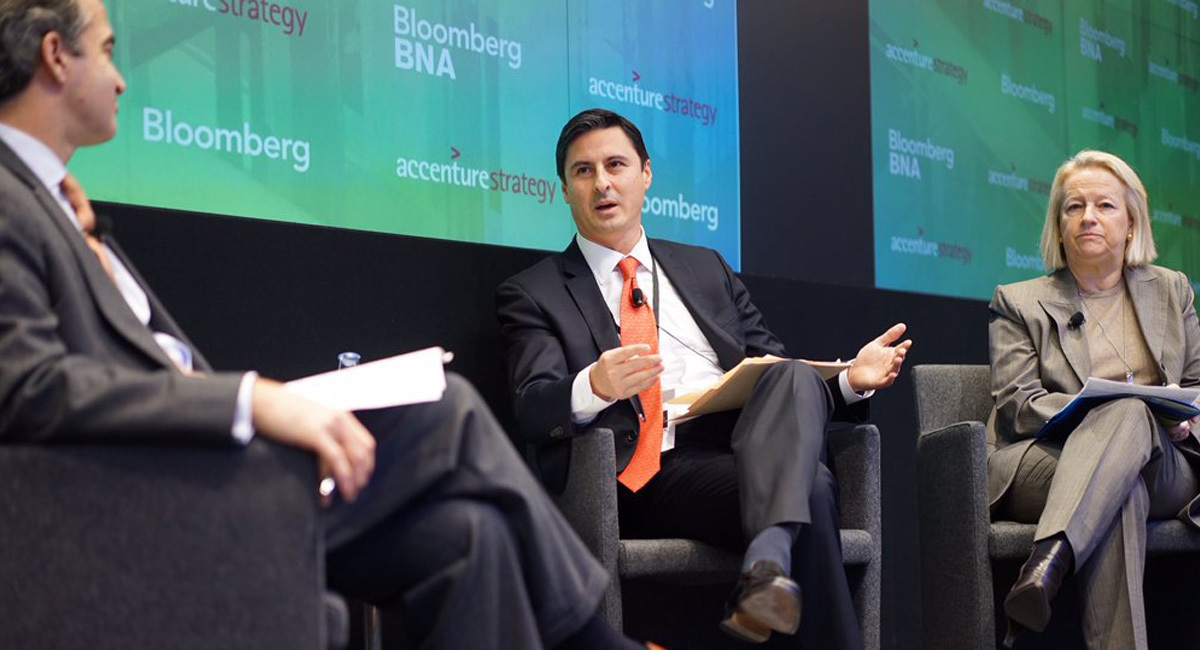October 5 and 6, 2016
By Gwenyth Jones
Learnings from conferences in the sustainability field are almost always numerous, and that was the case with this second Bloomberg event. To ensure I retain the most useful bits, however, I like to task myself, however, with boiling down my impressions to the most memorable insights. What strikingly new information was presented, what key innovations were discussed, which speakers exhibited the uncommon ability to synthesize historical evidence and place it in the context of today and tomorrow?
The following three takeaways from the Bloomberg Sustainable Business Summit 2016 met at least one of these criteria:
- Private sector vs big government. Mike Bloomberg opened the conference with a short speech on setting the agenda for sustainable business. He stated that the US is the only big country in the world likely to meet its COP21 targets easily, solely on the basis of our transition from coal-fired fuel to renewables…with virtually no help from government. Later in the conference, jaw-dropping stats on China’s progress were presented. Courtesy of Andrew Winston, China built more wind last year than the UK, Denmark and France already have in place, and has invested $329B into renewables. Over half of China’s new energy is renewable and has been for three years. Lise Kingo, Executive Director of the United Nations Global Compact, reported that China is addressing all 17 of the UN’s Sustainable Development Goals (SDGs) in its latest 5-year plan. Even if these numbers are not brand new, the contrast between the two approaches to energy independence is dramatic, particularly in the context of the current political climate in the US.
- Data on data tools. Audrey Choi, CEO of Morgan Stanley’s Institute for Sustainable Investing, cited the result of a study indicating that 93% of equities face climate risk. Broad-spread, transparent and standardized analysis of and reporting on these risks is not just important at the individual equity level. It’s key to understanding and managing risk at a systems level. Currently, however, the tools and practices available for these data-driven activities are wildly diverse and often hard to use, making it tough to find the right one for a given business, much less to develop a holistic picture. In a separate session, a new platform called SHIFT (Sustainability Help, Information, Frameworks and Tools) was presented by Jason Jay, Director, Sustainability Institute, MIT and Johanna C. Jobin, Director, Global EHS & Sustainability, Biogen. Developed at the Sustainability Institute, this yet-to-be-released software aims to database descriptions and detailed reviews of the myriad of options currently available, with search and refine functionality that allows users to identify the ones best suited to their needs. Sarah Nolet reported on this on October 12th for Sustainable Brands. SHIFT is seeking help to identify resources on which to report; all you data wonks and ops folks can jump in and be a part of this at the outset. Here’s their pre-launch collection form.
- A Jack Ma moment? Another start-up showcased, called Pathway21, promises a way to speed development of the circular economy. Executive Director Andrew Mangan presented his cloud-based platform for a materials marketplace. The infrastructure facilitates cross-industry materials reuse among suppliers and producers. One example is the selling and buying of leftover steel, e.g. from auto manufacturers to building contractors and companies like 3M. Managan reported that, within two months of launching a pilot in 2015, Pathway21 had 23 companies and over 2000 tons of materials in play. This year, Nike, GM, Starbucks, P&G and the government of Turkey are participating, to name a few. Stories abound of the difficulty companies have setting up the relationships needed to round-trip materials; this could make those connections far easier and faster. And, by the way, the “Jack Ma” quote is Mangan’s, not mine–but it’s the kind of thing that sticks in your head.
There were, certainly, many other interesting presentations. Those from Andrew Winston and Freya Williams were particularly lively and fun. From Williams, CEO of Futerra North America and author of Green Giants, what could be a better sound bite than answering the question “What’s the business case for sustainability?” with three words…”a billion dollars.” A panel on cities of the future, which included James Kenney (mayor of Philadelphia), Mike Pedersen (CEO of TD Bank) and Trish Plonski (SVP from Xerox), was excellent–full of reports on material progress and refreshing in its candor regarding impediments. Speakers representing the US Navy (Thomas W. Hicks, Deputy Under Secretary), Hewlett Packard Enterprise (Antonio Neri, EVP) and CDP (Paul Dickinson (Executive Chairman) were impressive, as were the accomplishments of their organizations. All in all, a conference that delivered on attendees’ investment of time and attention.
